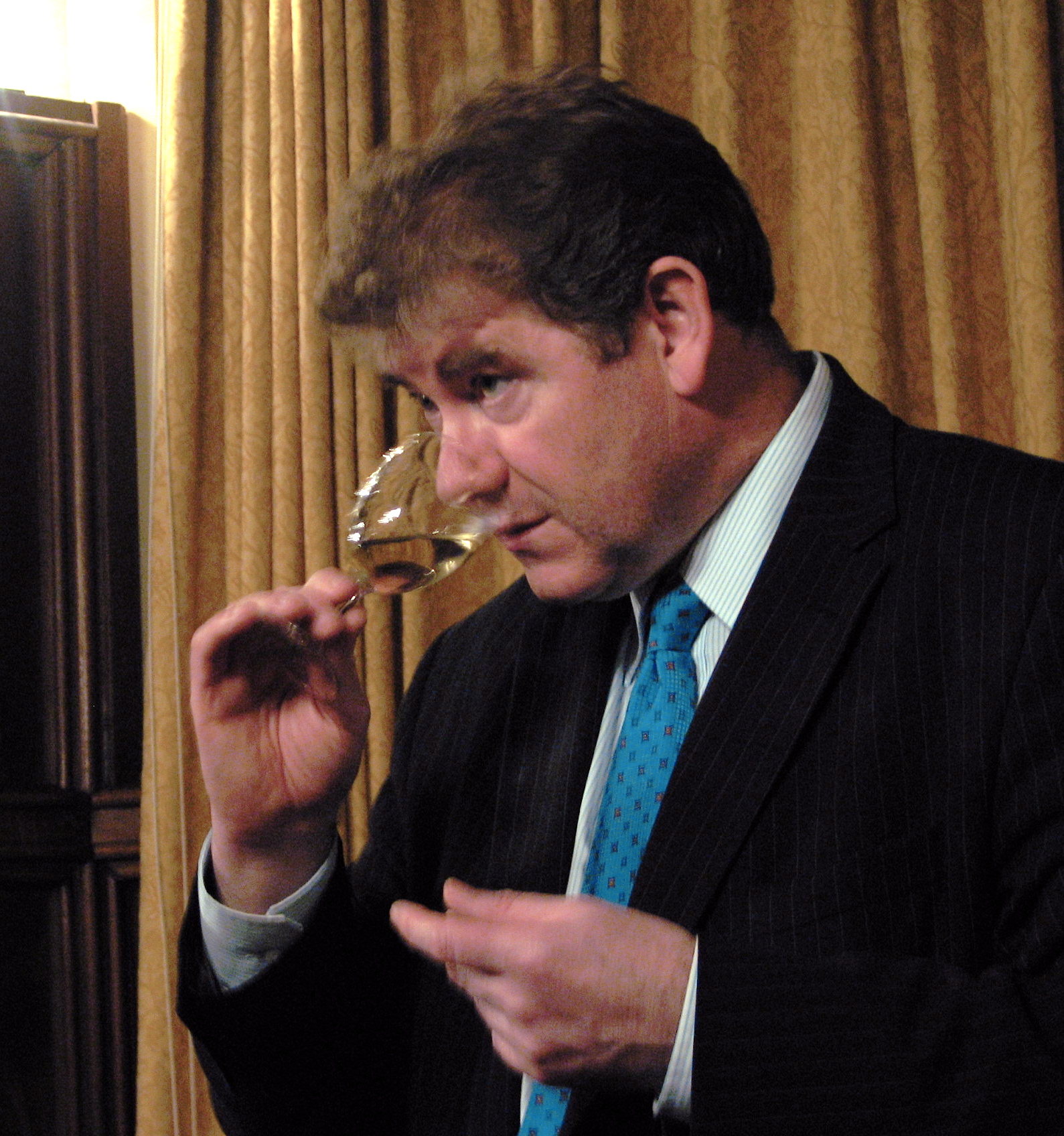|
Istituto Agrario Di San Michele All’Adige
The Edmund Mach Foundation, formerly the ''Istituto Agrario di San Michele all’Adige'' (IASMA), is an agrarian institution and wine academy located in Trentino in north-east Italy. It was founded in 1874, when the Tyrolean Diet at Innsbruck decided to open an agrarian school and research station at San Michele all’Adige, with the aim of improving agricultural practice in Tyrol. The Institute has been located within the premises of former Augustinian monastery of San Michele then abandoned due to its secularization in 1807. The lombardo-venetian enologist Edmund Mach was the academy's first director and the institute developed a reputation for work in viticulture and enology.J. Robinson (ed). ''"The Oxford Companion to Wine"''. Third Edition, pg. 608, Oxford University Press 2006 Its mission today is to provide agricultural education, training and consultancy, and to conduct research and experimentation with the aim of "promoting cultural and socio-economic growth in the agr ... [...More Info...] [...Related Items...] OR: [Wikipedia] [Google] [Baidu] |
Edmund Mach
Edmund is a masculine given name or surname in the English language. The name is derived from the Old English elements ''ēad'', meaning "prosperity" or "riches", and ''mund'', meaning "protector". Persons named Edmund include: People Kings and nobles *Edmund the Martyr (died 869 or 870), king of East Anglia *Edmund I (922–946), King of England from 939 to 946 *Edmund Ironside (989–1016), also known as Edmund II, King of England in 1016 *Edmund of Scotland (after 1070 – after 1097) *Edmund Crouchback (1245–1296), son of King Henry III of England and claimant to the Sicilian throne *Edmund, 2nd Earl of Cornwall (1249–1300), earl of Cornwall; English nobleman of royal descent *Edmund of Langley, 1st Duke of York (1341–1402), son of King Edward III of England *Edmund Tudor, 1st Earl of Richmond, Edmund Tudor, earl of Richmond (1430–1456), English and Welsh nobleman *Edmund, Prince of Schwarzenberg (1803–1873), the last created Austrian field marshal of the 19th centu ... [...More Info...] [...Related Items...] OR: [Wikipedia] [Google] [Baidu] |
Kingdom Of Lombardy–Venetia
The Kingdom of Lombardy–Venetia ( la, links=no, Regnum Langobardiae et Venetiae), commonly called the "Lombardo-Venetian Kingdom" ( it, links=no, Regno Lombardo-Veneto, german: links=no, Königreich Lombardo-Venetien), was a constituent land (crown land) of the Austrian Empire from 1815 to 1866. It was created in 1815 by resolution of the Congress of Vienna in recognition of the Austrian House of Habsburg-Lorraine's rights to the former Duchy of Milan and the former Republic of Venice after the Napoleonic Kingdom of Italy, proclaimed in 1805, had collapsed. The kingdom would cease to exist within the next fifty years—the region of Lombardy was ceded to France in 1859 after the Second Italian War of Independence, which then immediately ceded it to the Kingdom of Sardinia. Lombardy-Venetia was finally dissolved in 1866 when its remaining territory was incorporated into the recently proclaimed Kingdom of Italy. History Creation In the Treaty of Paris in 1814, the Austrians ... [...More Info...] [...Related Items...] OR: [Wikipedia] [Google] [Baidu] |
Phenogenetics
In genetics, the phenotype () is the set of observable characteristics or traits of an organism. The term covers the organism's morphology or physical form and structure, its developmental processes, its biochemical and physiological properties, its behavior, and the products of behavior. An organism's phenotype results from two basic factors: the expression of an organism's genetic code, or its genotype, and the influence of environmental factors. Both factors may interact, further affecting phenotype. When two or more clearly different phenotypes exist in the same population of a species, the species is called polymorphic. A well-documented example of polymorphism is Labrador Retriever coloring; while the coat color depends on many genes, it is clearly seen in the environment as yellow, black, and brown. Richard Dawkins in 1978 and then again in his 1982 book ''The Extended Phenotype'' suggested that one can regard bird nests and other built structures such as cad ... [...More Info...] [...Related Items...] OR: [Wikipedia] [Google] [Baidu] |
Phenolic Compounds In Wine
The phenolic content in wine refers to the phenolic compounds—natural phenol and polyphenols—in wine, which include a large group of several hundred chemical compounds that affect the taste, color and mouthfeel of wine. These compounds include phenolic acids, stilbenoids, flavonols, dihydroflavonols, anthocyanins, flavanol monomers (catechins) and flavanol polymers ( proanthocyanidins). This large group of natural phenols can be broadly separated into two categories, flavonoids and non-flavonoids. Flavonoids include the anthocyanins and tannins which contribute to the color and mouthfeel of the wine. The non-flavonoids include the stilbenoids such as resveratrol and phenolic acids such as benzoic, caffeic and cinnamic acids. Origin of the phenolic compounds The natural phenols are not evenly distributed within the fruit. Phenolic acids are largely present in the pulp, anthocyanins and stilbenoids in the skin, and other phenols (catechins, proanthocyanidins and flavonols) ... [...More Info...] [...Related Items...] OR: [Wikipedia] [Google] [Baidu] |
Wine Aromas
The aromas of wine are more diverse than its flavours. The human tongue is limited to the primary tastes perceived by taste receptors on the tongue – sourness, bitterness, saltiness, sweetness and savouriness. The wide array of fruit, earthy, leathery, floral, herbal, mineral, and woodsy flavour present in wine are derived from aroma notes sensed by the olfactory bulb.J. Robinson (ed) ''"The Oxford Companion to Wine"'' Third Edition p. 683 Oxford University Press 2006 In wine tasting, wine is sometimes smelled before taking a sip in order to identify some components of the wine that may be present. Different terms are used to describe what is being smelled. The most basic term is aroma which generally refers to a "pleasant" smell as opposed to odour which refers to an unpleasant smell or possible wine fault. The term aroma may be further distinguished from bouquet which generally refers to the smells that arise from the chemical reactions of fermentation and aging of t ... [...More Info...] [...Related Items...] OR: [Wikipedia] [Google] [Baidu] |
Genomic
Genomics is an interdisciplinary field of biology focusing on the structure, function, evolution, mapping, and editing of genomes. A genome is an organism's complete set of DNA, including all of its genes as well as its hierarchical, three-dimensional structural configuration. In contrast to genetics, which refers to the study of ''individual'' genes and their roles in inheritance, genomics aims at the collective characterization and quantification of ''all'' of an organism's genes, their interrelations and influence on the organism. Genes may direct the production of proteins with the assistance of enzymes and messenger molecules. In turn, proteins make up body structures such as organs and tissues as well as control chemical reactions and carry signals between cells. Genomics also involves the sequencing and analysis of genomes through uses of high throughput DNA sequencing and bioinformatics to assemble and analyze the function and structure of entire genomes. Advances in gen ... [...More Info...] [...Related Items...] OR: [Wikipedia] [Google] [Baidu] |
DNA Profiling
DNA profiling (also called DNA fingerprinting) is the process of determining an individual's DNA characteristics. DNA analysis intended to identify a species, rather than an individual, is called DNA barcoding. DNA profiling is a forensic technique in criminal investigations, comparing criminal suspects' profiles to DNA evidence so as to assess the likelihood of their involvement in the crime. It is also used in paternity testing, to establish immigration eligibility, and in genealogical and medical research. DNA profiling has also been used in the study of animal and plant populations in the fields of zoology, botany, and agriculture. Background Starting in the 1980s, scientific advances allowed the use of DNA as a material for the identification of an individual. The first patent covering the direct use of DNA variation for forensicsUS5593832A was filed by Jeffrey Glassberg in 1983, based upon work he had done while at Rockefeller University in the United States in 1981. ... [...More Info...] [...Related Items...] OR: [Wikipedia] [Google] [Baidu] |
Winemaking
Winemaking or vinification is the production of wine, starting with the selection of the fruit, its fermentation into alcohol, and the bottling of the finished liquid. The history of wine-making stretches over millennia. The science of wine and winemaking is known as oenology. A winemaker may also be called a vintner. The growing of grapes is viticulture and there are many varieties of grapes. Winemaking can be divided into two general categories: still wine production (without carbonation) and sparkling wine production (with carbonation – natural or injected). Red wine, white wine, and rosé are the other main categories. Although most wine is made from grapes, it may also be made from other plants. (See fruit wine.) Other similar light alcoholic drinks (as opposed to beer or Liquor, spirits) include mead, made by fermenting Honey#Fermentation, honey and water, cider ("apple cider"), made by fermenting the Apple juice, juice of apples, and perry ("pear cider"), made ... [...More Info...] [...Related Items...] OR: [Wikipedia] [Google] [Baidu] |
Indigenous (ecology)
In biogeography, a native species is indigenous to a given region or ecosystem if its presence in that region is the result of only local natural evolution (though often popularised as "with no human intervention") during history. The term is equivalent to the concept of indigenous or autochthonous species. Every wild organism (as opposed to a domesticated organism) is known as an introduced species within the regions where it was anthropogenically introduced. If an introduced species causes substantial ecological, environmental, and/or economic damage, it may be regarded more specifically as an invasive species. The notion of nativity is often a blurred concept, as it is a function of both time and political boundaries. Over long periods of time, local conditions and migratory patterns are constantly changing as tectonic plates move, join, and split. Natural climate change (which is much slower than human-caused climate change) changes sea level, ice cover, temperature, and r ... [...More Info...] [...Related Items...] OR: [Wikipedia] [Google] [Baidu] |
Grape Varieties
This list of grape varieties includes cultivated grapes, whether used for wine, or eating as a table grape, fresh or dried (raisin, currant, sultana). For a complete list of all grape species including those unimportant to agriculture, see Vitis. The term ''grape variety'' refers to cultivars rather than actual botanical varieties according to the International Code of Nomenclature for Cultivated Plants, because they are propagated by cuttings and may have unstable reproductive properties. However, the term ''variety'' has become so entrenched in viticulture that any change to using the term ''cultivar'' instead is unlikely. Single species grapes While some of the grapes in this list are hybrids, they are hybridized within a single species. For those grapes hybridized across species, known as interspecific hybrids, see the section on multispecies hybrid grapes below. ''Vitis vinifera'' (wine) Red grapes White grapes Rose Grapes ''Vitis vinifera'' (table) ... [...More Info...] [...Related Items...] OR: [Wikipedia] [Google] [Baidu] |
Ampelographic
Ampelography ( ἄμπελος, "vine" + γράφος, "writing") is the field of botany concerned with the identification and classification of grapevines, ''Vitis'' spp. Traditionally this has been done by comparing the shape and colour of the vine leaves and grape berries; more recently the study of vines has been revolutionised by DNA fingerprinting. Early history The grape vine is an extremely variable species In biology, a species is the basic unit of classification and a taxonomic rank of an organism, as well as a unit of biodiversity. A species is often defined as the largest group of organisms in which any two individuals of the appropriate s ... and some :Grape varieties, varieties, such as Pinot noir, Pinot, mutate particularly frequently. At the same time, the wine and table grape industries have been important since ancient times, so large sums of money can depend on the correct identification of different varieties and clones of grapevines. The science of ... [...More Info...] [...Related Items...] OR: [Wikipedia] [Google] [Baidu] |







